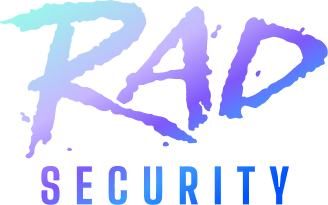Introduction
GKE security refers to the practices and measures implemented by an organization to ensure the secure operation of Google Kubernetes Engine – the Kubernetes-managed platform offered by the Google Cloud Platform (GCP) ecosystem. GKE security typically encompasses several aspects, including securing GKE clusters, managing access controls and permissions, and adopting general best practices to support a robust security posture. For information on the security of other Kubernetes managed platforms, see these blogs for AKS and EKS security.
Get the top 14 Kubernetes Security Posture Management (KSPM) misconfigurations for GKE
These misconfigurations apply specifically to GKE, as well as other cloud Kubernetes managed services.
General GKE Security examples
One of the most prominent components of GKE security is the use of what’s known as a security context deployment. This feature allows users to specify security-related configurations for pods, such as user and group permissions, Linux capabilities, and even SELinux options. By leveraging security context deployments, users can enforce security policies and restrictions within their GKE clusters, significantly mitigating the potential for exploitable vulnerabilities.
GKE permissions and access management also play an important part in maintaining a safe and secure GKE environment. GKE IAM (identity and access management) enables fine-grained control over access to GKE resources. Through IAM channels, users can grant or revoke permissions for specific actions within the GKE cluster.
Keep in mind the difference between cloud IAM and RBAC, and how they do and don’t work together. The GKE cluster admin role, for example, may choose to grant full control over the cluster, while other roles provide more limited access. Properly configuring GKE permissions is paramount for limiting the potential for security breaches and ensuring the principle of least privilege.
Adhering to GKE best practices is another essential part of ensuring GKE security. Google provides comprehensive guidelines and recommendations to assist users in the optimization of their GKE security posture. These best practices cover everything from cluster configuration, and networking, to logging, monitoring, and more. By following these guidelines, users can fortify their GKE clusters against common security threats and ensure compliance with industry standards and regulations.
One thing to keep in mind as you look at GKE security is how and why managed Kubernetes platforms do not have full-featured security capabilities for Kubernetes.
Security Center
The Google Cloud Platform Google Kubernetes Engine (or GCP GKE, for simplicity’s sake) offers a formidable array of security tools and features to help enhance the security of containerized applications and the overall GKE environment. Two of the most important security tools provided by GCP are Security Center and Security Command Center.
Security Center is a centralized security management and threat detection platform provided by GCP. It helps users increase visibility into the security state of their GKE clusters and other important cloud resources. With Security Center, users can easily monitor and analyze security-related telemetry, such as vulnerability scans, malware detection, and other suspicious activity. It also provides helpful recommendations to further improve security configurations, identifies various potential security risks, and offers in-depth insights into compliance requirements.
Security Command Center, however, is a more comprehensive security and risk management tool provided by GCP. This feature brings together security findings from multiple sources, including GKE clusters, infrastructure, and other cloud services. Security Command Center offers a centralized dashboard to monitor and manage security across the GCP environment. It provides real-time threat detection, alerting, and incident response capabilities. Users can also glean insights into security events, investigate potential threats, and remedy issues as necessary.
In addition to these tools, GCP offers other security features for GKE, such as Google Cloud Security Posture Management (CSPM). Generally speaking, CSPM provides a basic framework for assessing and improving the security configuration of GKE clusters and other vital GCP resources. It enables users to define certain security policies, monitor compliance, and automate the remediation of misconfigurations.
In capable hands, these tools and others can empower users to gain greater visibility into the security of their GKE clusters, detect and respond to threats, and ensure compliance with security policies and best practices. By leveraging these security features, users can enhance the security of their GKE deployments and protect their containerized applications and data within the cloud.
Get the Kubernetes Risk Visibility checklist
If you're not sure how to get adequate visibility into the security risk of your Kubernetes environment, including Security Center and more, use this easy checklist.
GKE Workload Identity
Throughout the process of securing a GKE environment, there are several important procedures to follow. These procedures involve the configuration of GKE ingress firewall rules, implementing RBAC (role-based access control) using Google Groups, and leveraging GKE workload identity. It might be helpful first to take a look at some basic, general Kubernetes security concepts before getting started with GKE specifically.
For starters, GKE ingress firewall rules should be carefully defined and implemented. Ingress firewall rules control all inbound traffic to GKE clusters, allowing users to restrict access to specific IP ranges or to limit traffic to specific ports and/or protocols. Properly configuring ingress firewall rules can help minimize unnecessary exposure to potential security risks, and allows only authorized traffic to reach the cluster.
RBAC is also crucial for controlling access to GKE resources. By utilizing Google Groups, RBAC enables much more in-depth access management. Users can assign roles to specific groups, thereby granting them certain permissions within the GKE environment. This approach simplifies access control and ensures that only authorized personnel have access to perform actions within the cluster.
Following GKE security best practices is invaluable to effectively securing a GKE environment. Configuring ingress firewall rules, implementing GKE RBAC Google Groups, and leveraging workload identity are all essential elements of a robust security strategy. Users can ensure that their GKE deployments are protected and have minimized attack surfaces by adhering to these crucial best practices.
GKE PodSecurityPolicy
The Kubernetes Pod Security Policy was deprecated in v1.21 of Kubernetes. Instead you can use the PodSecurity Admission Controller, GKE Autopilot clusters or Gatekeeper. For more information on migration from Pod Security Policies in GKE, see the official documentation here.
EKS vs GKE
For individuals considering pricing options for GKE, it’s important to compare them with other popular platforms like EKS (Amazon Elastic Kubernetes Service), Kubernetes (self-hosted), and Cloud Run. Each platform has its unique features and advantages, and each has a pricing model that reflects the available security features.
While both EKS and GKE are popular, managed Kubernetes services, EKS is offered by Amazon Web Services, whereas GKE is provided by Google Cloud Platform. GKE offers seamless integration within the broader Google Cloud Platform ecosystem, allowing users to leverage the unique features of each respective cloud provider.
GKE vs Kubernetes
On one hand, GKE (Google Kubernetes Engine) is a managed Kubernetes service, while Kubernetes refers to the open-source container orchestration platform. GKE can simplify Kubernetes deployment, management, and integration initiatives with Google Cloud services, providing a more streamlined experience when generally compared to self-hosted Kubernetes implementations.
GKE vs Cloud Run
Both GKE and Cloud Run are services offered by the Google Cloud Platform, but they have their own distinctive deployment models. GKE is a managed Kubernetes service for containerized applications. Conversely, Cloud Run is a serverless platform that allows running stateless containers without worrying about infrastructure management, making it much more suitable for event-driven workloads.
GKE Tutorial
If you are interested in learning and implementing GKE security, there are numerous helpful resources available, including tutorials, official documentation, as well as examples from the broader community.
To begin, official GKE documentation can be a comprehensive resource for understanding and implementing effective GKE security features. Topics covered may include securing clusters, managing access control, configuring network policies, implementing security best practices, and more. The documentation provides step-by-step instructions, explanations, and examples to guide users through the security-related aspects of GKE.
Google Cloud’s GKE tutorial can be a great starting point for individuals seeking hands-on tutorials. This tutorial does a great job of walking users through the process of deploying and securing a GKE cluster, and it covers numerous topics such as creating clusters, configuring node pools, securing ingress traffic, and enabling Cloud Armor for DDoS protection. The GKE Terraform example also demonstrates how to use Terraform to provision and configure a GKE cluster, providing a practical framework for automating GKE deployments.
Another valuable resource for learning and implementing GKE security with Terraform is the GKE Terraform GitHub repository. This repository contains example code and configurations that may be used as reference points for deploying GKE clusters with Terraform. Users can also deploy a Terraform GKE Autopilot cluster, allowing for the automation of the creation and management of a serverless Kubernetes environment.
GKE Autopilot privileged access management offers a secure and managed environment for running containerized workloads, allowing users to focus on their applications while offloading infrastructure management responsibilities to cloud solutions providers.
To summarize, the resources for learning and implementing GKE security include the official GKE documentation, GKE tutorial materials provided by Google Cloud, and other examples from the community on GitHub. These resources can give users a wealth of information, practical guidance, and examples to help users understand and implement secure, effective GKE deployments.
GKE Module Terraform
To automate and manage security configurations for GKE deployments, Terraform can help – especially when used in conjunction with specific GKE modules and resources.
One of the key resources is the GKE module in Terraform, which provides a simpler method of creating and managing GKE clusters. This module abstracts the complexity of GKE configuration to allow users to define various security-related settings. As it pertains to security roles, Terraform allows for the definition and assignment of GKE roles through its configuration files.
Users can also ensure the appropriate access levels and security measures within the GKE environment by customizing the permissions of the GKE default service account through Terraform. Users can also configure and define GKE node pools – Terraform allows for precise control over the specifications and security settings of the compute instances within the GKE cluster.
Using Terraform to automate and manage security configurations for GKE deployments involves leveraging the GKE module, defining and assigning roles, customizing the default service account’s permissions, and configuring GKE node pools. These capabilities allow users to establish robust security measures while maintaining consistent security configurations within their GKE environment.
For better security guardrails in GKE, get the admission control checklist
Conclusion
In conclusion, ensuring the security of Google Kubernetes Engine (GKE) is of utmost importance for organizations leveraging the Kubernetes-managed platform. GKE security involves implementing practices such as security context deployments, managing access controls and permissions, and adhering to best practices recommended by Google. By leveraging security tools like Security Center and Security Command Center provided by the Google Cloud Platform, users can gain visibility into the security state of their GKE clusters and effectively detect and respond to threats. Additionally, following essential procedures such as configuring ingress firewall rules, implementing RBAC using Google Groups, and leveraging GKE workload identity further enhances GKE security. The availability of tutorials, official documentation, and community examples provides valuable resources for users to learn and implement secure GKE deployments. Terraform can be a powerful tool in automating and managing security configurations for GKE, with its GKE module enabling simplified creation and management of GKE clusters, customization of permissions, and precise control over security settings. Overall, by employing these measures and resources, organizations can establish robust security measures and protect their containerized applications and data within the GKE environment.
Demo KSOC today to secure your GKE environment



